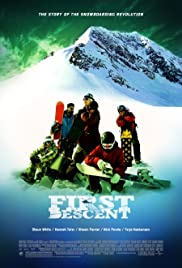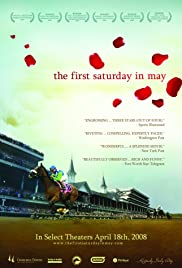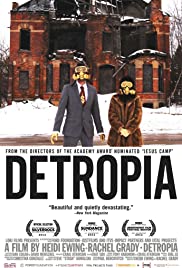
First Descent is a 2005 documentary film about snowboarding and its beginning in the 1980s. The snowboarders featured in this movie (Shawn Farmer, Nick Perata, Terje Haakonsen, Hannah Teter and Shaun White with guest appearances from Travis Rice) represent three generations of snowboarders and the progress this young sport has made over the past two decades. Most of the movie was shot in Alaska.
You May Also Like

Bring on the Night is a 1985 documentary film, that focuses on the jazz-inspired project and band led by the British musician Sting during the early stages of his solo career. Some of the songs, whose recording sessions are featured in the film, appeared on his debut solo album The Dream of the Blue Turtles. Each musician in the band through the course of the film is interviewed.

The parents are at their wits’ end, so a temporary supervision order is the last hope for a group of teenagers in Punks. Now, on a remote farm in France, they’re going to have to get their lives back on track, with the help of a counselor. If they want any chance of a happy life, they need to engage in some frank and painful conversations. Mitchel has to find a way to get along with his father, but maybe too much has already happened since his mother died. Jahlano is already at the next stage: he’s no longer allowed to live with his mother, and needs to get over the disappointment. Mike, meanwhile, is struggling with his image as a boy who’s “got a screw loose.” Filmed in constant close-up by director Maasja Ooms, the teenagers try to tame their demons with music and therapy, but problems from the past keep resurfacing. In this intimate and sincere portrait, these troubled kids show us their most vulnerable sides.

Roots music icon Chris Strachwitz is a detective of deep American music – music thatandapos;s the antithesis of the corporate andquot;mouse musicandquot; dominating pop culture. Since 1960, he has been the guiding force behind legendary Arhoolie Recor…

Once brushed aside – even deemed criminal – graffiti has since paved the way for many successful, credible artists today. With Duality, these street artists– some for the first time, some maintaining a strict code of anonymity – discuss their journeys from “tagging” to becoming respected icons in the cities they serve with pieces that are awe-inspiring in scope, size and complexity. They have collectively proven that their genre of art is something that can influence culture, evoke emotion, inspire, and cultivate community. Their rise has not been without challenges and criticism but today they are admired by throngs of fans and oftentimes the art they produce brings in revenue for household brands and worldwide corporations. No longer relegated to back alleys, their works can be found on main streets, on the faces of landmark buildings and in fine art galleries.

Playwright Arthur Miller, director Volker Schlöndorff and actor Dustin Hoffman are seen creating the Roxbury Productions and Punch Productions teleplay Death of a Salesman (1985).

From no longer being her mom’s stand-in husband to a “romantic” honeymoon with her wife, Fortune Feimster is crushing it in this feel-good special.

The Billion Dollar Car: Is the Electric Car going to change the future of urban mobility? For years companies have been manufacturing and selling electric and hybrid cars. But is there a future for the eco-friendly automobile? This documentary follows the development of electric cars including the BMW i3.

Follows six diverse trainers as they jockey for position along the 2006 Kentucky Derby trail.

Detroit’s story has encapsulated the iconic narrative of America over the last century – the Great Migration of African Americans escaping Jim Crow; the rise of manufacturing and the middle class; the love affair with automobiles; the flowering of the American dream; and now… the collapse of the economy and the fading American mythos.

Author Barry Gifford’s gritty autobiographical stories of growing up in 1950s Chicago provide the backdrop for an impressionistic documentary portrait of a vanished time and place.

Cave paintings and lunar calendars exist in the caves and remains of prehistoric hunters studied recently. What if Prehistoric Man were clever enough to develop in depth scientific knowledge? As unlikely as it may seem, new data tend to prove that Prehistoric Man actually invented Astronomy!